John Ford's Points
Portland
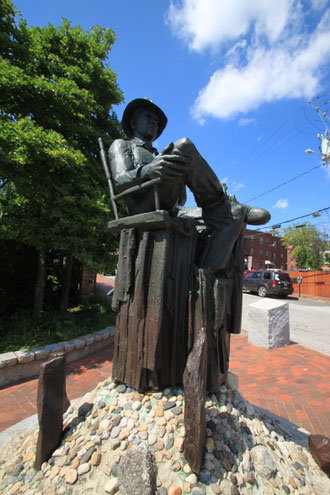
John Ford‘s hometown Portland honored its famous son with the statue at Gorham’s Corner, across the former site of Feeney’s (Ford’s family’s) Saloon. His family had lived over the establishment on Center Street for fourteen years. He had lived on Danforth Street, not far from the statue. The ten-foot-high bronze depicts a middle-aged “Pappy” sitting in his director’s chair, looking across Center Street where his father’s saloon stood.
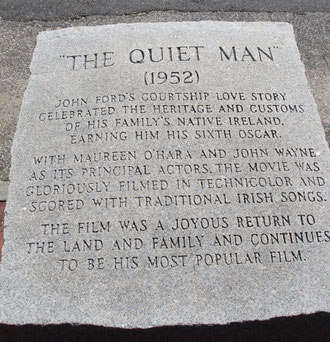
The names of his most favorite movies are engraved in the socket.
John Ford Chapel

John Ford used his salary from They Were Expandable to found the Field Photo Farm in the San Fernando Valley, as a shrine to the fallen for his unit and a meeting place for the veterans of the O.S.S. The clubhouse was located at 18201 Calvert Street in Reseda. Studio art designers and set-builders helped to construct a non-denominational chapel from an old gatehouse.
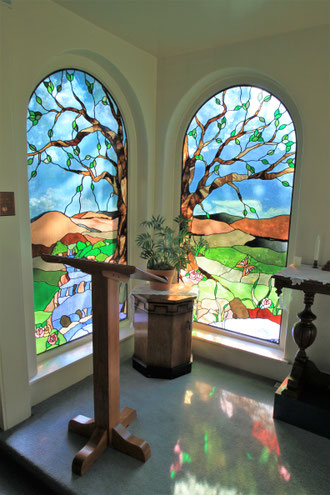
The stained glass windows came from the chapel in Ford’s Oscar winning How Green was My Valley.
When Harry Carey died, Ford put on a funeral in the chapel. Carey’s horse Sunny was hitched outside the chapel (when Ford paid homage to his early western star in the credits of Three Godfathers, he had Cliff Lyons riding Sunny, imitating a Harry Carey gesture). After Ward Bond's untimely death, his body was placed in a flag-draped casket in the chapel. John Wayne read the same poem he had recited over the dead soldier in They Were Expendable. The same chapel saw Ford and his wife Mary celebrating their fiftieth anniversary by being married again.
John Wayne would often visit the Field Photo Farm on Memorial Day. After the clubhouse was destroyed by fire in 1969, the land and remaining buildings were donated to the Motion Picture and Television Relief Fund. The chapel itself was moved to the grounds of the retirement community at the Motion Picture Country House and Hospital (MPTF) in Woodland Hills. It was dedicated anew as the John Ford Chapel on October 19, 1969, and it’s still there, at 23399 Mulholland Dr. MPTF was created by Hollywood’s earliest entertainment luminaries. For his 99th birthday, Kirk Douglas endowed the MPTF a $15 million gift to enable the creation of an 80-resident Alzheimer facility.
San Francisquito Canyon

One place in the greater Los Angeles area held a special meaning for John Wayne: The home of his boyhood idol Harry Carey at the mouth of San Francisquito Canyon, north of Saugus. The silent movie star had acquired the homestead in 1916, established a rancho and even a Trading Post. Occasionally, the western actor and his novice director, Jack Ford, would use the rustic ranch as a location for their early sagebrush sagas. At one point, Ford had even moved in with the Careys as a live-in guest while learning his craft doing two-reelers for Universal. Santa Clarita Valley was then a busy western location.

Harry Carey Jr., later a frequent fixture in Wayne Westerns, was born in the ranch home in 1921. Because of his red hair, most everybody called him „Dobe“, short for adobe, the color of the bricks the rancho was made of. Through his association with Ford, young John Wayne was welcomed into their circle of friends. He spent many hours around the Carey fireplace. The Careys had moved out of the ranch by 1944. The ranch house at 29350 Avenida Rancho Tesoro is now the centerpiece of the Harry Carey Historic District; it is being preserved and open to the public.
Saugus Café
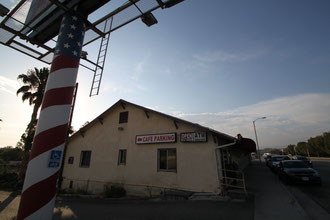
The Saugus Café is Los Angeles Country’s oldest continually operating eatery. It has been open twenty-four hours for more than a century (except for closure during World War II, due to food shortages). It’s now called The Original Saugus Café, at 25861 Railroad Ave. The stars didn’t just eat there – they came to shoot their shows in the area. That's how John Wayne became a regular for a while. He was familiar with Saugus ever since he appeared just a short distance from the Café, in the Saugus Rodeo on the old Gibson Ranch in 1939.
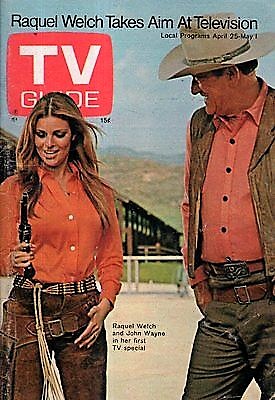
Wayne appeared right in the back of the Saugus Café, in a Raquel Welch TV special called Raquel!, aired April 26, 1970. He taught Raquel how to handle a six-gun. Corrals then occupied the space just behind the café - it is now the parking lot.
Gower Gulch

When Harry Carey was at the peak of his career, a street corner on 6098 Sunset Blvd named Gower Gulch was the hangout for many out-of-work cowboys. They came to town because word was out that Hollywoodland needed men who could ride and take a fall. They waited in hopes of being picked for „extra work“ in the westerns. Many struggling small studios were located nearby on „Poverty Row“. The small studios made good use of the riding abilities of these cowpokes. When John Wayne started working there, he used to study the mannerisms of these men.
Holy Cross

John Ford died Friday, August 31, 1973, after receiving the last rites. His grave is in Holy Cross, the Catholic cemetery in Culver City; section M, Lot 304, Space 5, Ladera Heights. Admiral John Ford lies just a few plots from his brother Francis.
©All text content on this website is protected by copyright and other intellectual property laws. No part may be reproduced without the prior written permission. All photos courtesy of Roland Schaefli, unless otherwise stated.
This website is in no way associated with the John Wayne Estate or business enterprises. Go to johnwayne.com to find the official website and to https://johnwayne.org/ to read about the wonderful John Wayne Cancer Foundation.
more john wayne locations to scout
If you like this site, you'll like the book: the first comprehensive guide to the John Wayne Locations, with hundreds of then-and-now photos, unpublished behind-the-scenes-pictures and detailed tour descriptions
Tracking John Wayne: The complete Tourguide
Find directions to locations and anecdotes from the Duke's movie sets in this new publication from McFarland, available at bookstores and online shops
For all locations mentioned on this website, the book offers behind-the-scenes stories, making-of anecdotes and never before published photos

